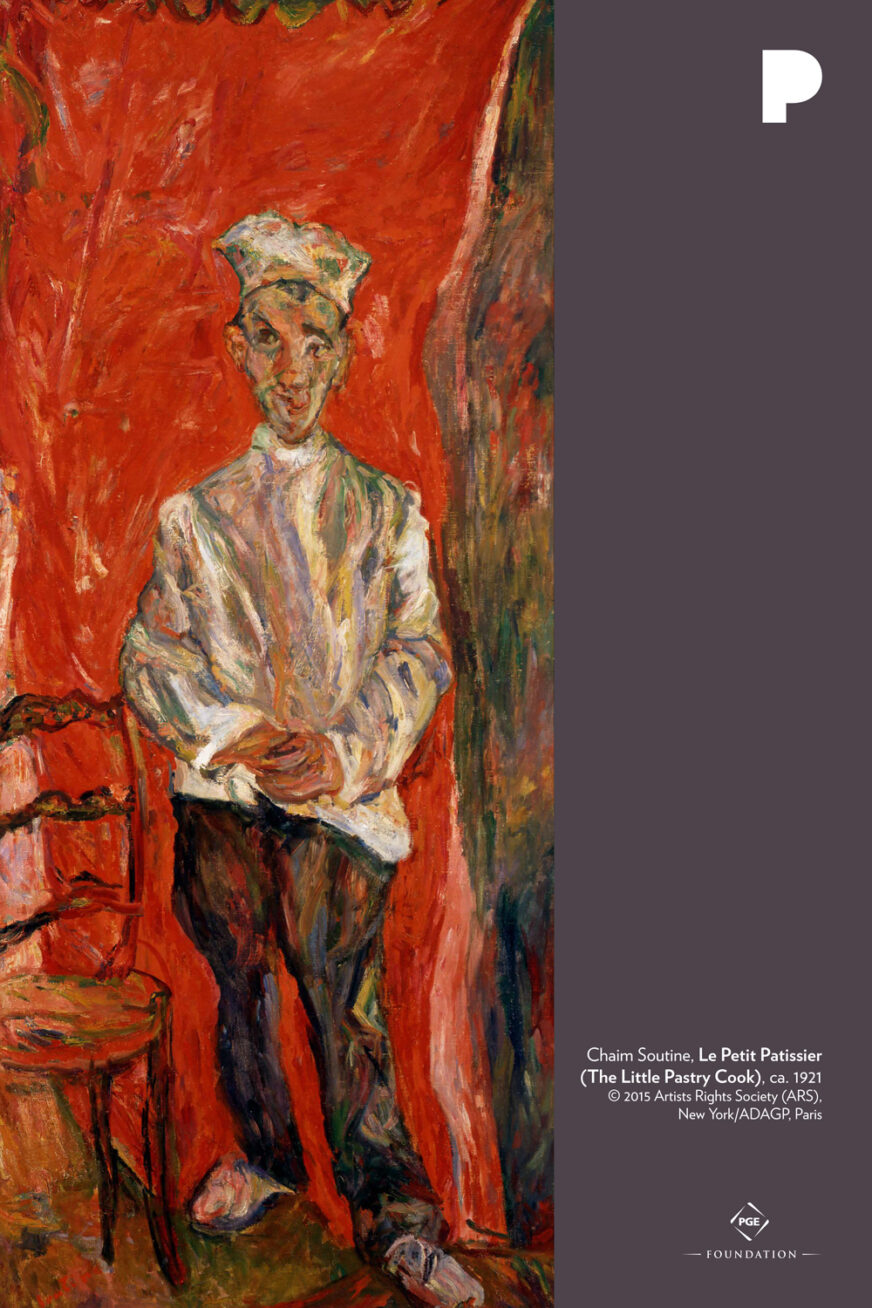
Chaim Soutine was born to very poor Orthodox Jewish parents in a small village near Minsk, Russia (now Belarus), in 1894. As a boy he loved to draw, though it was forbidden in his religious community. At 16, he left home to attend art school in Lithuania. The next year he moved to Paris to enter the École des Beaux Arts.
Portraits were a favorite subject of Soutine. The Little Pastry Cook is one from a series of portraits of working class people. Soutine emphasized the personality and feelings of the cook, not the details of his appearance. Soutine conveyed emotion by using brilliant colors and distorted shapes. He created a sense of movement through the impasto application of paint. This style is called Expressionism.
Soutine found success as an artist in the 1930s. But, when Germany invaded Paris in 1940, Soutine left in fear. As a Jew, he was forced to hide from the Nazis in the countryside. He returned to Paris for treatment of a bleeding ulcer and died after surgery at age 50.
Expressionism
An international artistic movement in art, architecture, literature, and performance that flourished between 1905 and 1920, especially in Germany and Austria, that favored the expression of subjective emotions and experience over depictions of objective reality. Conventions of Expressionist style include distortion, exaggeration, fantasy, and vivid, jarring, violent, or dynamic application of color.
Impasto
A thick application of paint, or deep brushstrokes.
Definitions adapted from MOMA Glossary of Art Terms.
Discussion and activities
- What colors can you identify in this painting? Which color stands out most vividly? How does its intensity make you feel? What emotion do you think The Little Pastry Cook conveys?
- When you visit the Museum, notice the thick brushstrokes in The Little Pastry Cook. How does Soutine’s use of impasto create emotion?
- Describe the pastry cook’s facial expression, body language, and dress. What kind of personality does he have? What mood is he in? Try to stand in the same pose as the pastry cook. How does it feel? If this figure could move, would he move quickly or slowly?
- Compare this portrait to others you’ve seen. Why do you think Soutine chose to paint ordinary people in their work clothes? Think about the people you have seen today. Who would you choose to create a portrait of? What objects, colors, and/or textures would you include in the portrait to reveal important details about the person?
- List some adjectives that describe both the feelings of the pastry cook and your feelings viewing the work. Use these adjectives to write a poem or short story inspired by the painting.